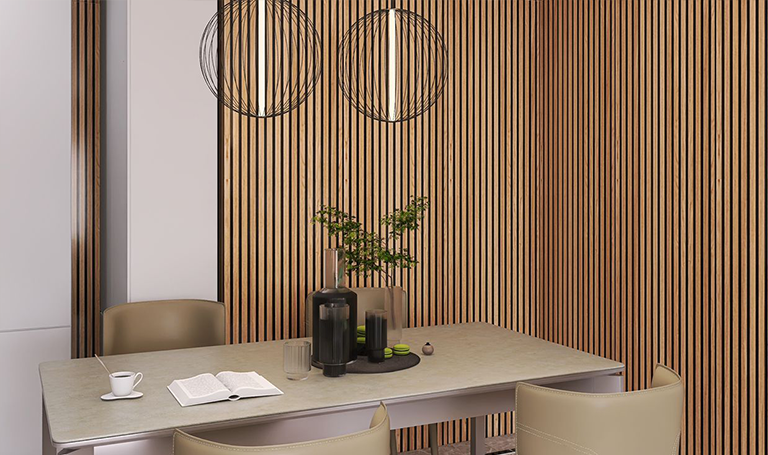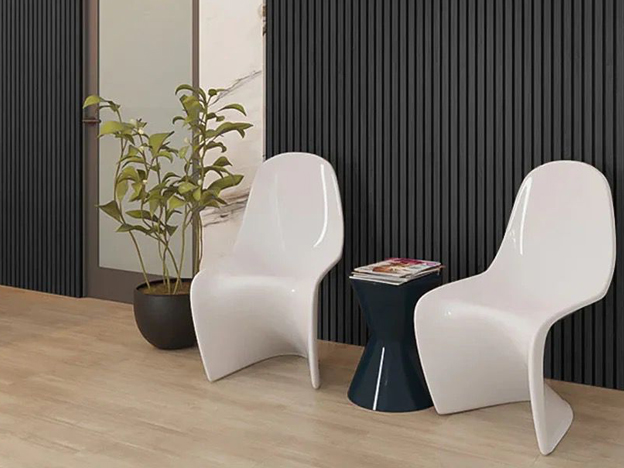
Modern Wood Paneling: A Timeless Trend with a Contemporary Twist
Wood paneling is making a chic resurgence in interior design, demonstrating how traditional materials can adapt to contemporary style. Modern wood paneling offers sleek finishes, adaptable applications, and eco-friendly solutions that improve any living area, as opposed to the outmoded, dark-paneled walls of the past. Wood paneling may provide warmth and character to your house, regardless of your preference for a minimalist, modern design or a rustic, traditional aesthetic.
Why Modern Wood Paneling is Making a Comeback
Homeowners and designers are embracing modern wood paneling for several compelling reasons. Many homeowners are turning to
as a stylish and sustainable option for modern interiors. This trend has resurfaced due to its ability to:
- Enhance Visual Appeal – Wood paneling adds depth, warmth, and texture to any space.
- Improve Insulation – Wood naturally regulates temperature and provides soundproofing.
- Offer Design Versatility – Available in a range of colors, finishes, and patterns to suit any aesthetic.
- Support Sustainability – Many manufacturers now use reclaimed or responsibly sourced wood.
- Increase Home Value – Well-installed paneling elevates interior appeal and resale potential.
Unlike outdated, synthetic paneling from decades ago, modern wood paneling focuses on natural finishes, clean lines, and innovative installation methods.
Exploring Different Styles of Modern Wood Paneling
One of the biggest advantages of
is its ability to enhance any room’s aesthetic while maintaining durability. Not all wood paneling is the same. Understanding different styles will help you choose the right one for your home:
Beadboard Panels
Beadboard consists of narrow vertical planks with a distinctive beaded edge. It’s commonly used for wainscoting but can also be installed on full walls to create a charming, cottage-inspired look.
Shiplap Panels
Shiplap adds a delicate shadow effect with its horizontal wooden boards that have tiny spaces between them. It was first utilized in coastal and farmhouse designs, but it is now a common feature in contemporary interiors.
V-Groove Panels
Similar to shiplap but with a more defined V-shaped groove, this style adds depth to walls and ceilings, making it a great option for modern and rustic spaces alike.
Board-and-Batten
This bold paneling style uses wide vertical boards paired with narrow battens, creating a dramatic, structured look. It’s perfect for adding architectural interest to entryways, bedrooms, or living rooms.
Slat Wood Panels
A rising trend in contemporary homes, slat wood paneling consists of thin, evenly spaced wood slats that provide a modern, textured appearance. This style works particularly well in accent walls and ceilings.
How to Incorporate Modern Wood Paneling into Your Home
Modern wood paneling is versatile enough to be used in various spaces throughout your home. Here are some creative ways to incorporate it:
Accent Walls
A single paneled wall can serve as a focal point in a room, adding character without overwhelming the space.
Ceilings
Extending wood paneling to the ceiling creates a seamless, sophisticated look. It works exceptionally well in rustic, industrial, or Scandinavian-inspired designs.
Kitchen Backsplashes
Wood paneling is a creative substitute for a backsplash. To guard against spills and humidity, select materials and sealants that can withstand moisture.
Wainscoting
Installing paneling on the lower half of a wall can add a refined, traditional touch to dining rooms, hallways, and bathrooms.
Doors & Cabinetry
Incorporating wood paneling into doors, kitchen cabinets, or built-in shelving creates a cohesive and high-end look.
Tips for Choosing the Right Wood Paneling
When selecting modern wood paneling, consider these essential factors:
- Room Size – Light-colored paneling can make small spaces feel larger, while darker wood adds coziness to larger rooms.
- Material Quality – Choose high-quality wood or engineered alternatives for durability and longevity.
- Installation Method – Decide between DIY-friendly options like peel-and-stick panels or more permanent, professionally installed choices.
- Finishes & Colors – Natural, stained, or painted finishes can dramatically change the feel of the space.
- Sustainability – Opt for eco-friendly materials like reclaimed wood or FSC-certified products.
Creative Ways to Elevate Modern Wood Paneling
Want to take your modern wood paneling to the next level? Here are some innovative design ideas:
- Mix Wood Tones – Combine different shades of wood for a unique, layered look.
- Incorporate Metal Accents – Pair wood paneling with black or brass fixtures for a modern industrial vibe.
- Experiment with Geometric Patterns – Try diagonal, chevron, or herringbone layouts for added visual interest.
- Use Paneling on Furniture – Apply wood panels to headboards, kitchen islands, or entertainment units for a cohesive look.
FAQs About Modern Wood Paneling
Is modern wood paneling suitable for humid environments like bathrooms?
Yes! However, it’s essential to use moisture-resistant wood like cedar or teak and apply a protective sealant to prevent warping.
Can I install modern wood paneling myself?
A lot of types, such as tongue-and-groove or peel-and-stick panels, are do-it-yourself options. However, professional installation is advised for full-room covering or more complex patterns.
How do I maintain modern wood paneling?
Regular dusting and occasional polishing help maintain the paneling’s beauty. Painted panels may require touch-ups, while natural wood should be resealed periodically.
What are the best color choices for painted wood paneling?
Neutral tones like white, gray, and black are popular choices for a modern aesthetic. Soft greens and navy blues can add a trendy, sophisticated touch.
Is modern wood paneling expensive?
The cost varies based on material and installation. Reclaimed wood and engineered panels offer budget-friendly alternatives without sacrificing style.
Final Thoughts: Why Modern Wood Paneling is Worth the Investment
Whether you want to create a bold statement or a subtle texture,
is a fantastic option. More than just a fad, modern wood paneling is a classic, adaptable, and useful element that elevates any house. Paneling provides countless personalization options, whether your goal is a clean modern room or a rustic refuge.
Key Takeaways on Modern Wood Paneling:
✔ Styles – Beadboard, shiplap, board-and-batten, slat wood, and V-groove provide diverse design options.
✔ Uses – Accent walls, ceilings, wainscoting, and even kitchen backsplashes benefit from wood paneling.
✔ Customization – Choose from different finishes, materials, and layouts to match your unique style.
Ready to transform your home? Embrace modern wood paneling and create a space that’s warm, stylish, and undeniably inviting!
